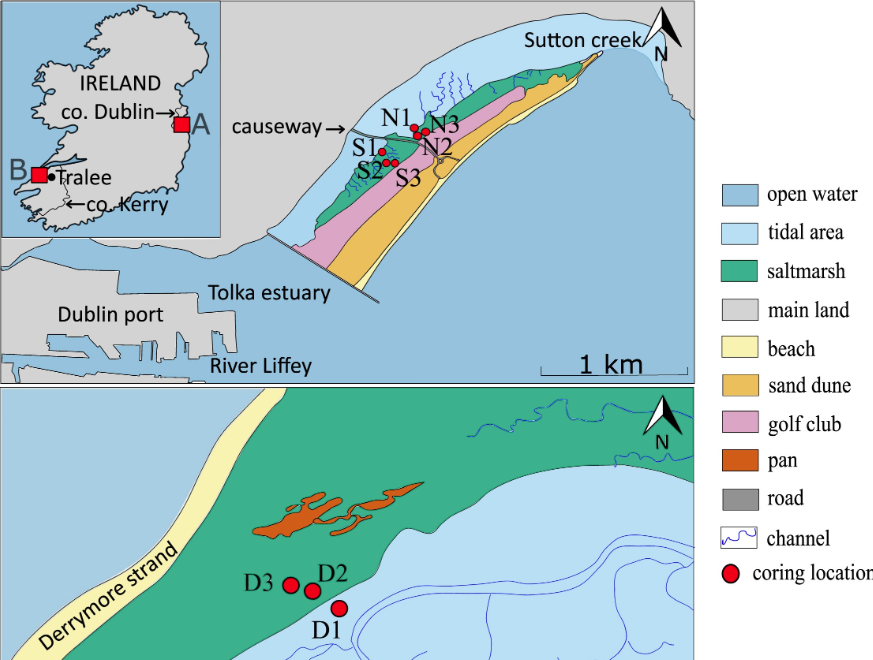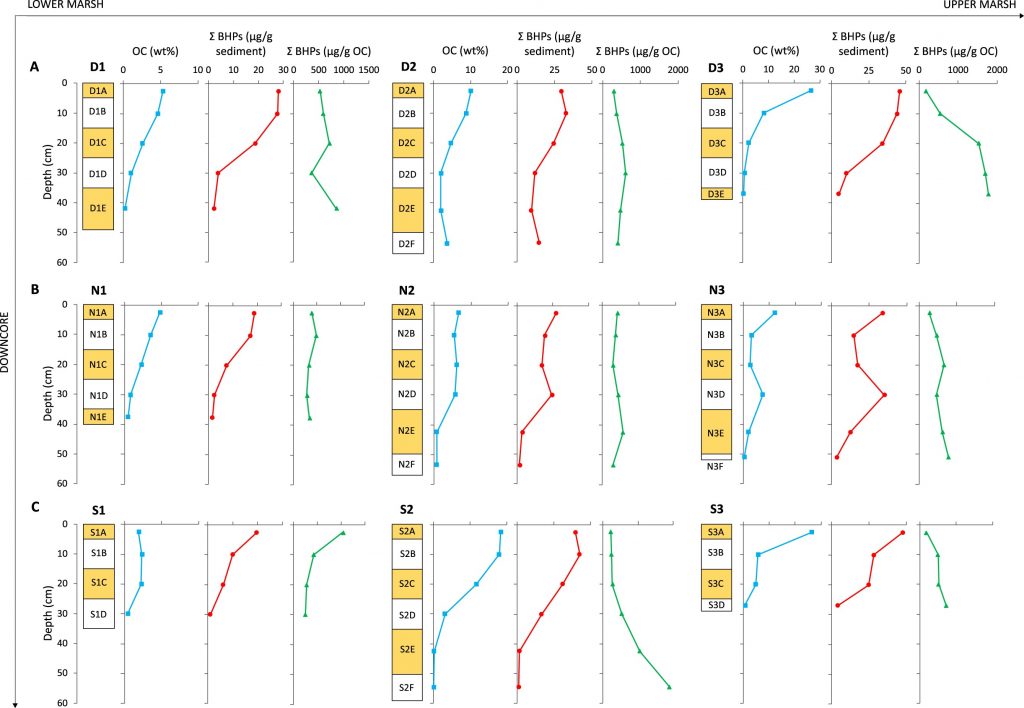This collaboration with the BlueC project at University College Dublin measured organic carbon and BHP biomarkers in saltmarshes from the East and West coasts of Ireland. The paper is published in Sustainable Microbiology.

Organic carbon concentrations were high and very variable, from 0.26% up to 26%, a 100 times increase. Concentrations were particularly high at the top of cores from the upper marsh (furthest from the sea). Comparing this to the BHP data showed that these samples were rich in marine organic matter. Terrestrial BHPs were only found in high concentrations at depth in the oldest cores. Therefore, most of the carbon in the saltmarsh sediments has been brought in on the tide, and the influence of tidal sediment supply on saltmarshes is important for their growth and survival.

This is our first study using BHPs to investigate saltmarshes. The oldest, high-marsh sediments had terrestrial BHP signatures, but everywhere else the source appears to be marine.